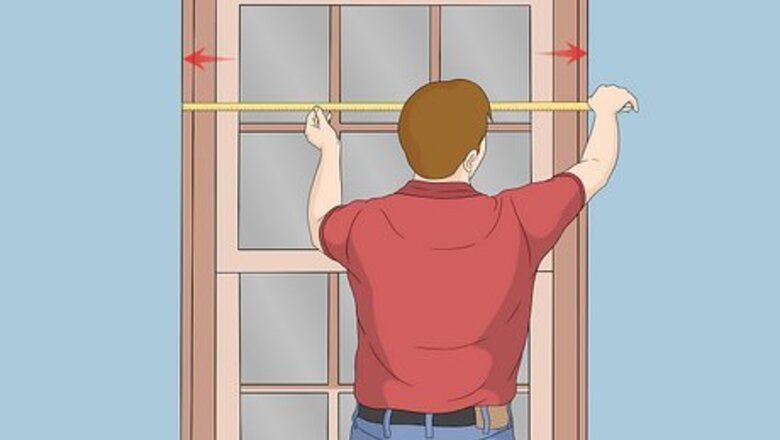
views
X
Expert Source
Angelica SavardHome Stager, Realtor, & Interior Designer
Expert Interview. 30 April 2020.
When you're done, you can custom order the right curtains for your windows.
- If you’re measuring for rods, use a tape measure to measure the window width-wise from the outer ends of its frame.
- Then, add 3 inches (7.6 cm) to both sides of the window if you’re placing the rod over it. Or, add 3-5 inches (7.6-13 cm cm) if the rod is below the window trim.
- Measure the length of your window from the top of the windowsill to the bottom. Then, add the measurement for your rod height to determine the curtain length.
Measuring for Rods
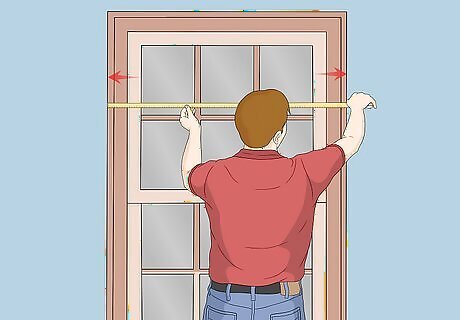
Measure the width of each window. Use a measuring tape to measure the window width-wise from one end of the window to the other. Start measuring at the outer end of the window's frame on one side and end at the outer frame on the other side.
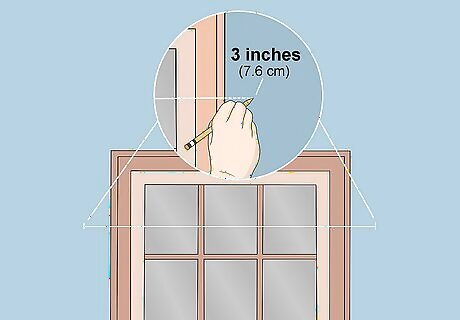
Add 3 inches (7.6 cm) to each side for a rod above the trim mount. After you measure the width of the window, add 3 inches (7.6 cm) to both sides. This will give you a general sense of the length of the rod you need if you're keeping it just above the curtains, which is the most common style. For example, say your window's width was 30 inches (76 cm). Add 6 inches (15 cm) to get the rod size of 36 inches (91 cm).
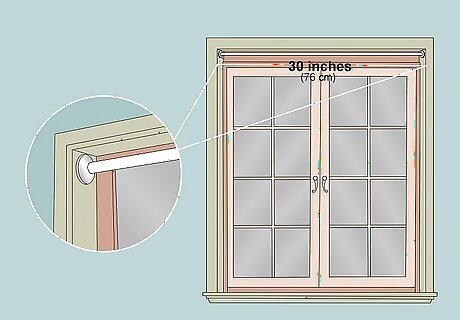
Use the exact window width if your rod is inside the trim mount. Rods kept inside the trim mount give a very streamlined, practical style. The rod will be the same length as the width of the window. For example, if window's width was 30 inches (76 cm), your rod's length would also be 30 inches (76 cm).
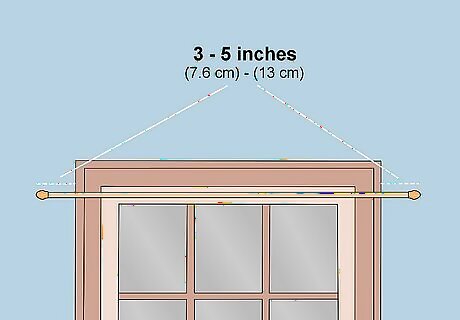
Add 3 inches (7.6 cm) to 5 inches (13 cm) for a rod below the trim. A rod kept below the trim mount can help show off decorative window frames and molds. Rods positioned below the trim mount are generally 3 inches (7.6 cm) to 5 inches (13 cm) longer than the width of the window. This helps provide full coverage, even with the top of the window exposed. For example, say your window's width is 30 inches (76 cm). For a below trim rod, your rod should be 33 inches (84 cm).
Taking Basic Curtain Measurements
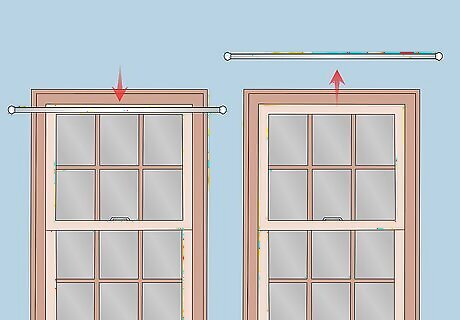
Determine rod placement. Decide if your rod is going to be at the frame, below the frame, or above the frame. If you're placing the rod below or above the frame, determine precisely how many inches or centimeters off-center the rod will be. For longer curtains, the rod will probably be higher above the window. Rods can be placed anywhere from 6 inches (15 cm) to 12 inches (30 cm) above the window frame. It can help to make a light mark on the wall to determine where your rod will fall.
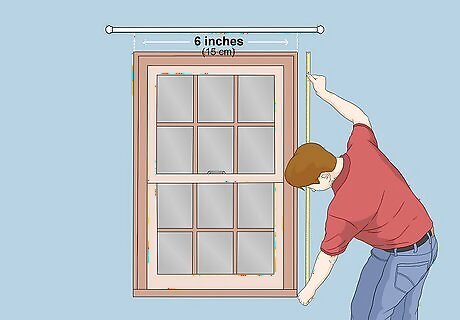
Measure your window's length. Measure your window from the top of the windowsill to the bottom. Then, add any additional measurements based on rod placement for a rough window length. Later, you'll need to tweak this measurement as you determine curtain type. For example, say the length of the window is 40 inches (100 cm). You want your curtain rod a little higher than the frame, so add 6 inches (15 cm) to this to get a length of 46 inches (120 cm).
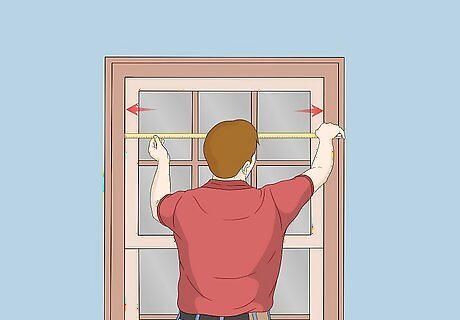
Measure the basic width. The basic width is found by measuring the window from one pane to another. This rough measurement gives you a good starting point. You should slightly tweak the measurement based on which curtain type you choose.
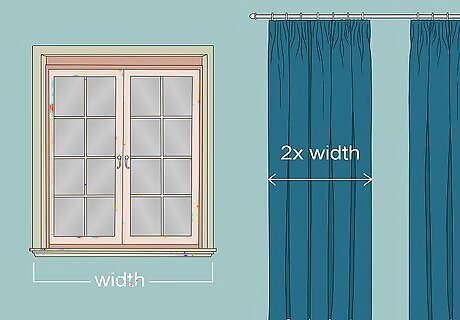
Calculate your width based on curtain type. Your width is affected by the type of curtains you purchase. The following are general rules of thumb to calculate width depending on the curtain type: Double the width for pencil pleated windows. Multiply the width by two for eyelet windows. Multiply the width by 1.5 for tab top windows.
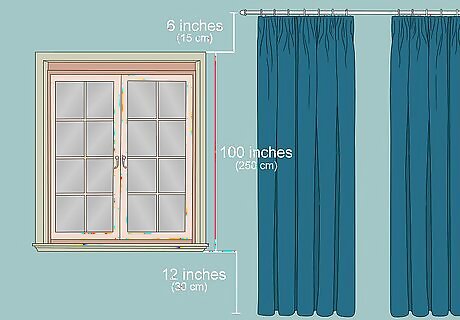
Calculate your precise curtain length. After you've figured out the length of your window, make sure you're positive about where you want your curtains to fall. Sill length curtains usually fall .5 inches (1.3 cm) above the windowsill. Below sill length curtains usually fall about 6 inches (15 cm) below the windowsill. Floor length curtains usually fall about .5 inches (1.3 cm) above the floor. Also, account for the placement of the rod. For example, say you want below sill curtains. Your window is 100 inches (250 cm) and the rod will be 6 inches (15 cm) above the frame. Add 12 inches (30 cm) to 100 inches (250 cm). Your curtain length should be 106 inches (270 cm).
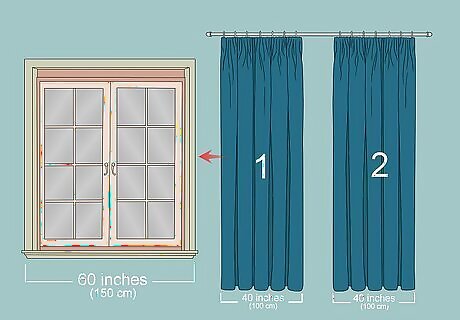
Decide how many panels to order. Windows generally have at least two panels. Check the average width of panels in your preferred style. This helps determine how many panels you need. For example, say your pencil pleated panel is usually sold with a width of 40 inches (100 cm). If your window's width is 60 inches (150 cm), you need to order two panels.
Making Adjustments for Special Features
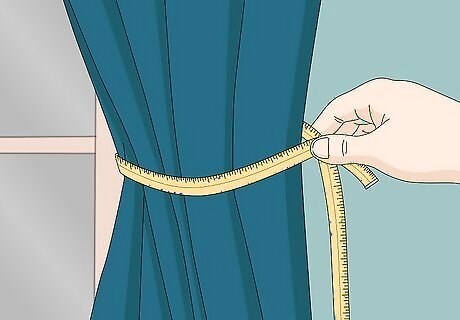
Measure for tie-backs. If you want tie-backs, which are ropes used to hold the curtains back, you will need to measure for them once your curtains come in. To measure for tie-backs, wrap a measuring tape around your curtains. Adjust the measuring tape until the curtain is gathered loosely in the tape without being pinched or folded. Record the measurement to figure out the length of your tie-back.
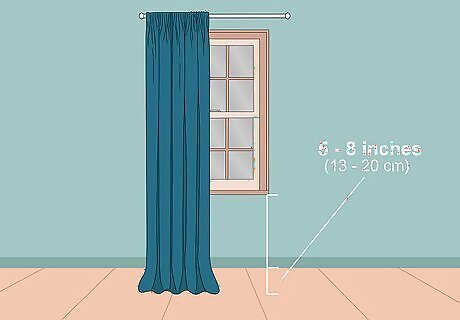
Account for puddling. If your curtains are mostly for show, you can measure to have them puddle slightly on the floor. Measure the distance between the bottom of the window frame and the floor. Add this measurement to the total curtain length. This adds a small amount of puddling. If you want more dramatic puddling, you can add on a few more inches or centimeters. A 5 to 8 inches (13 to 20 cm) puddle will fan slightly across the floor. For a more dramatic puddle, you can add 10 inches (25 cm) or more to your total curtain length. Functional curtains, which are going to be opened and closed frequently, should not have puddling.
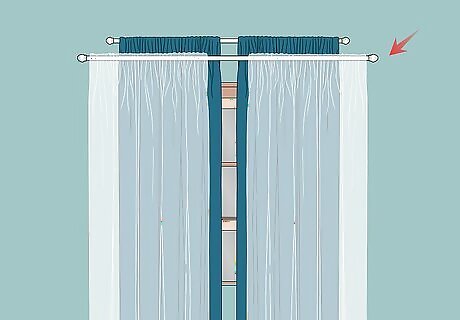
Add layering. If you want a layered look, you can get two different curtains fitted for the proper width for your window. You will then need to install a double rod so the curtains can overlap.
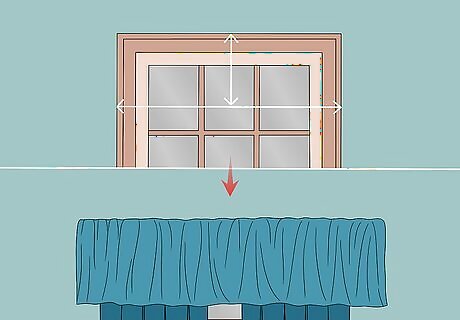
Measure for a window valance. A valance covers the top third or fourth of a window. To measure for a valance, measure the width of the window from the inside left of the frame to the inside right of the frame. Then, to measure length, measure downward from the inside top frame to where you want the valance to fall on the window. From there, multiply the width depending on your curtain type. For example, for a pencil pleated window valance, double the width.

Consult with a professional. It's always a good idea to seek consultation with a professional before finalizing your order. Talk to someone working at the establishment where you're buying your curtains. Ask them to double check that the measurements you took are accurate before placing your order.




















Comments
0 comment